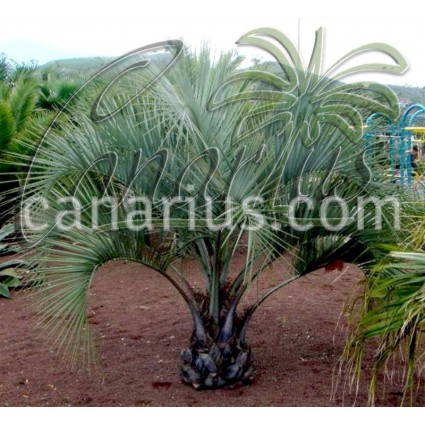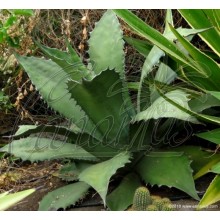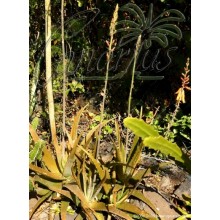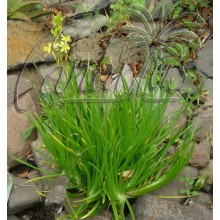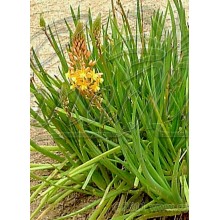Butia odorata - Jelly Palm - Large
Feather palm with sweet, tasty, scented fruits. It is native to Brazil, Uruguay and Argentina and it is the only frost-hardy species of palm that can produce abundant, delicious and useful fruits in colder climates. Leaves are blue-silvery, elegantly arching. Mature specimens show no damage at -10 C and some have survived to -20 C !
Nuevo
Hardy feather palm with sweet, tasty fruits, native to Brazil, Uruguay and Argentina. It is the only frost-hardy species of palm that can produce abundant, delicious and useful fruits in colder climates. The trunk is robust, grey and leaves are elegantly recurved, varying from bluish-grey to green.
This palm tree has been widely planted in gardens of southern Europe for about a century, with the wrong name of Butia capitata. In the past decades, new taxonomical work placed its correct name as Butia odorata.
Fruiting Butia odorata
Fruits are round, yellow to orange, edible and delicious for preparing jams, jellies and other desserts. Seeds are round and the size depends on the particular form. It is a non-domesticated fruit tree, so each specimen is a bit different. All fruits are good but some are larger or tastier. This palm species takes few years to set the first fruit. Fruit set can be expected in just 3-4 years from seed in tropical countries, but can take 10 years in warm temperate or mediterranean climates.
Cultivation and hardiness
Butia odorata will succeed in most climates, from temperate to tropical, as large specimens tolerate extremely low and high temperatures. Mature specimens show no damage at -10 C and some have survived to -20 C It is fast growing because new leaves are produced abundantly, but it can be very slow to make a trunk. It sets fruits when still trunkless, and this is why it is a fast-fruiting species.
What do we ship?
We offer a potted plant of h= 100 cm - Cont. 20 cm, about 3 years old from seed.
The picture of many fruits on the bunch is from wikimedia commons: By Moxfyre - Own work, CC BY-SA 3.0, https://commons.wikimedia.org/w/index.php?curid=15942233
| Cultivada | Protegido |
| Origen de la especie | América |
| Forma presentación | En maceta (mezcla de sustratos) |
| Familia Botánica | Arecaceae |
| Temperatura mínima invierno | -20 ºC a -15 ºC |
| Cuidados | Maceta |
| Forma | Palmeras y Similares |















